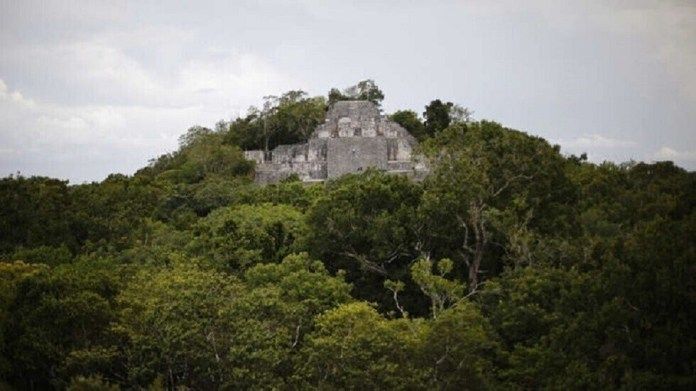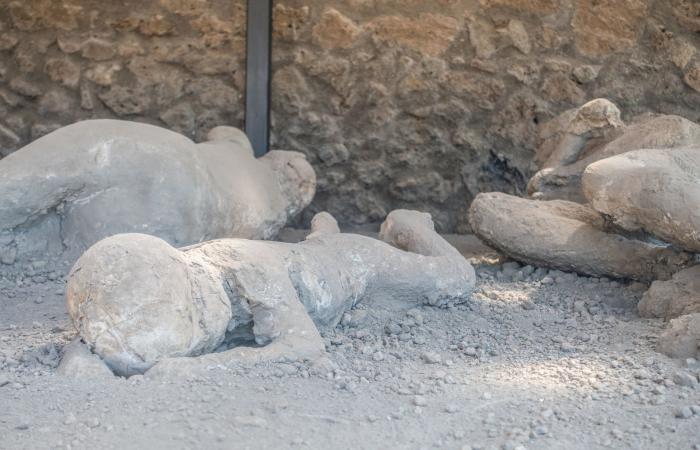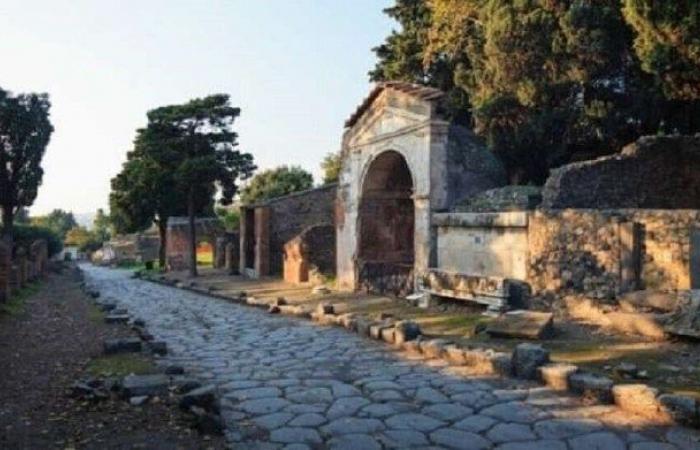Scientists have found preserved brain cells in the remains of a young man who died in the eruption of Mount Vesuvius in 79 AD, as brain cells turned to glass after being exposed to a torrent of hot ash.
The structure of the brain cells is still visible in the black glass material found in the man’s skull. This new discovery of this structure, reported in a report published on October 2 in the journal PLOS ONE, adds to the accumulated evidence that this glassy substance is indeed part of a man’s brain. The transformation to glass occurred as a result of intense heating and rapid cooling.
The study’s lead author, Pierre Paolo Petroni, forensic anthropologist at the University of Naples Federico II in Italy, said in a statement: “The results of our study show that the glazing took place in Herculaneum (an ancient Roman city, located in southern Italy near the ancient city of Pompeii), which is Unique, and it froze the nerve structures of this victim and kept them intact until today. “

Herculaneum was an ancient city at the foot of Mount Vesuvius, which exploded spectacularly nearly 2,000 years ago. A cloud of ash and hot gases, known as a lava flow, buried Herculaneum as well as its famous neighbor Pompeii.
This hot ash destroyed the city and bury it simultaneously, heating the organic matter rapidly. Oddly enough, however, the rapid burial meant that although materials such as wood and flesh were charred, or primarily converted into charcoal, they were also preserved as they were in the moments after it was suddenly heated to 932 degrees Fahrenheit (500 degrees Celsius).
Petron and colleagues examined black-glass material found inside the cracked and charred skull of a 20-year-old man found face down on a bed in Herculaneum’s Collegium Augustalium, and this building, near Herculaneum’s main street, was the seat of the cult of Emperor Augustus.
Petron and his team previously analyzed the remains of Herculaneum victims, and earlier this year, they reported in the Journal of the American Medical Association (JAMA) that they had found vitreous brain residue in the 20-year-old’s body.
Now, using electron microscopy to see the smallest details of the sample, researchers have discovered delicate spherical and long tube structures that resemble neurons and projection fibers, called axons.
read more

They are 550 to 830 nanometers in diameter, and these projections are too small to be capillaries. Spherical structures appear to hold cell membranes as well as internal capillaries, or structural proteins within the cell, microscopic vesicles, or endocysts that aid in transporting proteins to the cell surface.
The researchers also used a method called energy dispersive X-ray spectroscopy, which uses X-rays to determine the chemical composition of the material. They found that the sample was rich in carbon and oxygen, indicating that it was organic.
Building on previous research published in JAMA, which discovered a number of protein structures in the sample, the researchers compared these ancient proteins to a database of proteins in the human brain. And they found that all the proteins they discovered were present in brain tissue. For example, a protein called ATP6VIF is known to be involved in transporting chemicals known as neurotransmitters through synapses, which are the gaps between axons.
Based on the concentrations of these proteins and the location of the sample at the back of the skull, Petron and colleagues suspect that they may have discovered part of the man’s spinal cord and the cerebellum, a brain structure at the base of the skull responsible for movement and coordination.
Preserved brain tissue is rare in archeology. But sometimes, brain tissue can live for hundreds or thousands of years. For example, a 2,600-year-old skull was found in a crater in northern England containing a shrinking remains of the brain with some still intact proteins.
Source: Live Science


These were the details of the news “Vitreous” brain cells found in a victim of the eruption of... for this day. We hope that we have succeeded by giving you the full details and information. To follow all our news, you can subscribe to the alerts system or to one of our different systems to provide you with all that is new.
It is also worth noting that the original news has been published and is available at eg24.news and the editorial team at AlKhaleej Today has confirmed it and it has been modified, and it may have been completely transferred or quoted from it and you can read and follow this news from its main source.



